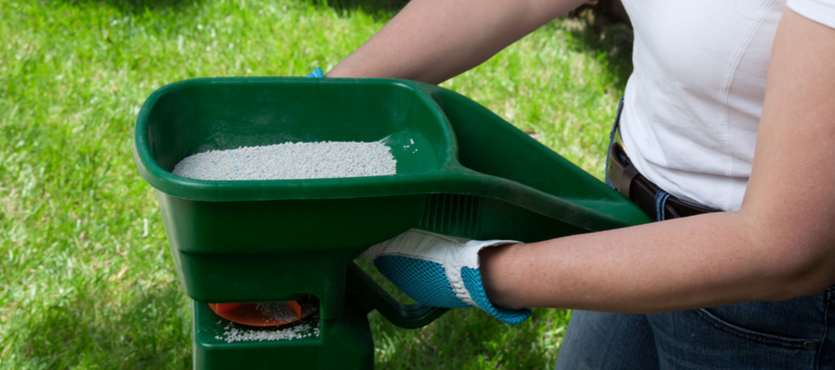Fertilizing your lawn keeps your lawn healthy and thriving. Here in South Florida, fertilizing your lawn is even more important because turfgrass grows year round unlike North and Central Florida where it only grows in early spring (March and April) and fall (September, October, and November). The main rule to remember when fertilizing your lawn in Florida (wherever you live) is to only fertilize when your lawn is growing. This, of course, means if you live in South Florida, you will need to fertilize your lawn year round to keep it flourishing.
Another important factor for your lawn fertilization schedule is your lawn maintenance plan. Higher maintenance means you’ll be fertilizing more often, while a lower maintenance program will see you fertilizing less often. Either way, you will want to choose a fertilizer which features slow-release nitrogen, which releases much needed oxygen to your turf grass for an extended time period. In addition, Florida state law requires lawn fertilizer contains two percent phosphorous or less.
Say No to Weed and Feed Products – When looking for an appropriate fertilizer, many people turn to the convenience of weed and feed products. These fertilizers contain herbicides (weed killers) which can harm your lawn and landscaping. The reason – timing is typically off as fertilizers and herbicides are applied at different times of the year to be the most effective. On top of that, weed and feed can be harmful to other plants in your yard, including trees, shrubs, and more. Weed and feed products can not only harm the plants in your yard, but your lawn as well when applied in temperatures above 90°F, which happens frequently in South Florida. Protect your yard by applying herbicides and pesticides only to the areas where they are needed and not to your entire lawn where they cause harm.
Calculating the Amount of Fertilizer Your Need – When applying fertilizer, the number one question is how do much is enough? After all, too much fertilizer can damage your lawn and be detrimental to the environment. The answer is not as difficult as you might imagine. Begin with a determination of the square footage of your lawn by measuring or looking it up on your property survey. Once you have that measurement and because fertilization need vary based on grass type and location, you’ll need to know the type of grass you have as well as where you live. Armed with the information, you can explore the types of fertilizer available to use keeping in mind you want one with slow-release nitrogen. And as always, if you aren’t sure which fertilizer to choose, call on the team at Xtreme Landscaping to help you choose and provide you with a schedule for application.
Everyone loves a Green Lawn – There is no doubt, everyone, everywhere loves a lush green lawn. The problem is, in south Florida, your beautiful green St. Augustine, Bahia, and other grasses often turn a not so lovely shade of yellow. Before you blame the excessive heat or lack of water, the truth is yellowing is often cause by a lack of needed nitrogen. And to compound the issue, adding more fertilizer with nitrogen isn’t always the answer and can contribute to insect infestation and disease.
So, how do you get your lawn back to luscious green in the summer or early fall? Try skipping the fertilizer and adding chelate iron or iron sulfate to your lawn and watch the green return with the enhanced growth than can come with a complete fertilizer. You may need to repeat to keep the green year round, even here in sunny beautiful south Florida.
If you aren’t sure how to choose the appropriate fertilizer, call on the experts at Xtreme Landscaping to help. A soil test can help determine the nutrients present in your soil and let you know what nutrients you need to add through fertilization.

